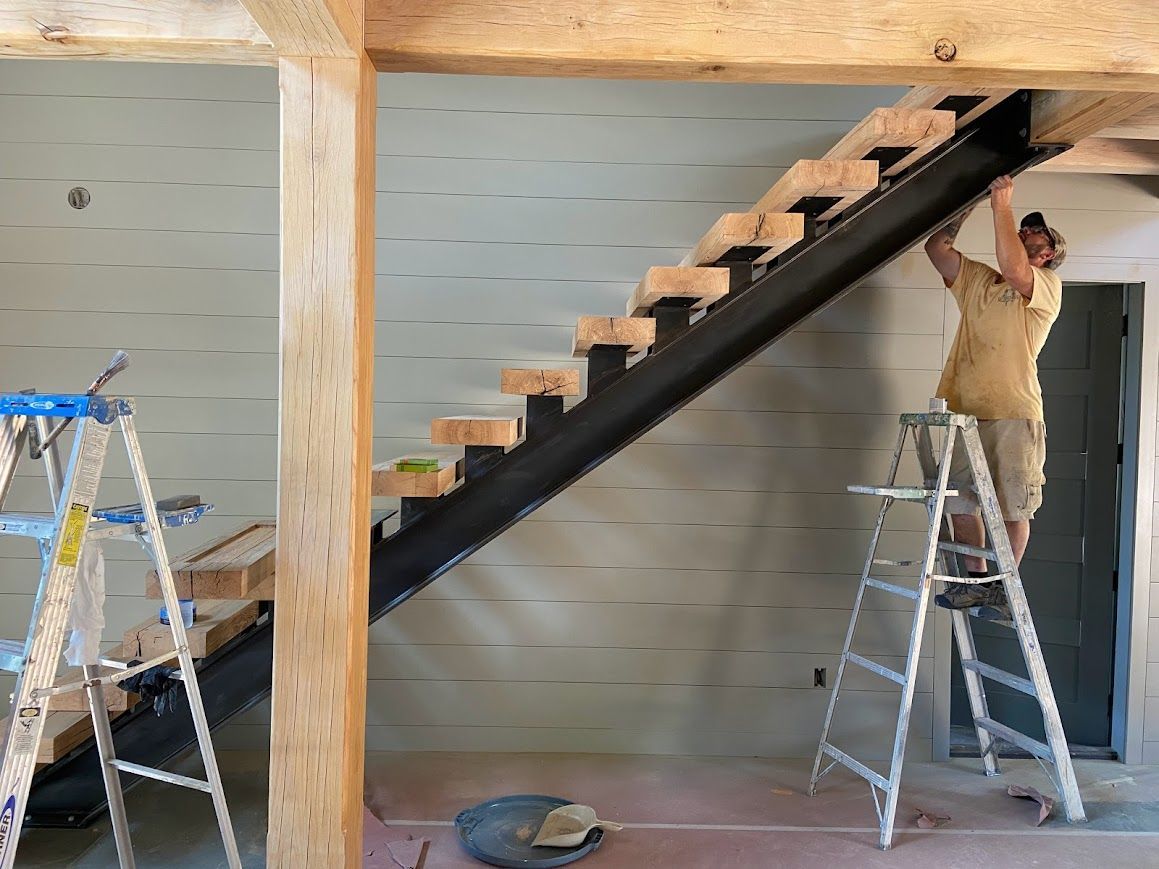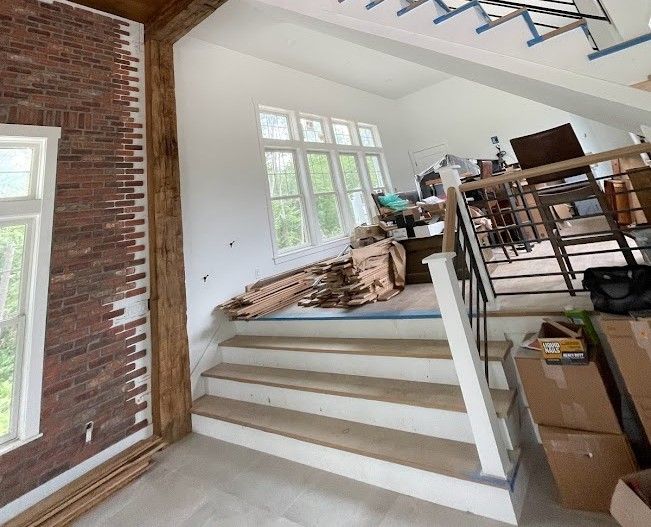How to Use Reclaimed Wood for Stunning Stair Treads
Eco-Friendly and Stylish Stair Treads

Reclaimed wood brings history and character into modern homes. Each piece carries a story, whether it came from an old barn, a vintage factory, or a historic frame. One of the most striking ways to use this material is for stair treads, making your staircase a functional and eye-catching part of your home.
In our guide, we will show you how to incorporate reclaimed wood stair treads into your project, combining beauty, durability, and sustainability.
Why Reclaimed Wood Stair Treads?
Reclaimed wood stair treads aren't just practical; they bring uniqueness to your home. Their imperfections, such as nail holes, knots, and wear patterns, tell compelling stories from their past lives. Unlike new lumber, reclaimed wood offers warmth and authenticity that can’t be reproduced.
Apart from their aesthetic qualities, using reclaimed wood also supports sustainable building practices. By upcycling existing materials, you reduce waste and give old wood a new purpose.
Steps to Create Reclaimed Wood Stair Treads
1. Select the Right Wood
Not all reclaimed wood is suitable for stair treads. Here’s what to look for:
- Hardwood varieties like oak, chestnut, or pine are durable and long-lasting.
- Structural integrity: Avoid wood with rot, deep splits, or insect damage.
- Thickness: Choose wood that is at least 1.5 inches thick for a solid, long-lasting tread. Many building codes require at least 1 inch, but thicker treads feel sturdier.
2. Prepare the Wood
Proper preparation is essential to ensure safety and longevity:
- Clean thoroughly: Scrub off dirt, old paint, and residue using a gentle cleaner.
- Sand gently: Smooth out rough spots while preserving unique imperfections like grooves and patina.
- Remove embedded hardware: Use pliers or a metal detector to locate and extract hidden nails or screws.
- Check moisture levels: Make sure the wood’s moisture content is between 6% and 12% to avoid warping after installation.
3. Install with Care
Installing reclaimed wood stair treads requires precision:
- Measure carefully: Each reclaimed piece may be slightly different in size. Trim them as needed for a snug fit.
- Secure properly: Use screws or nails alongside wood glue to keep the treads stable. This guarantees the staircase is safe and meets building codes.
- Allow for movement: Reclaimed wood can expand and contract depending on humidity. Leave a small gap at the edges to accommodate this natural shift.
4. Choose the Right Finish
Finishes protect the wood and highlight its character:
- Penetrating oil finishes: Tung oil or linseed oil enhances the natural look while sealing the wood.
- Low-sheen polyurethane: Ideal for high-traffic areas, this finish offers durability without detracting from the wood’s worn appeal.
- Non-slip treatment: Consider adding a non-slip coating or texture for safety, especially if the staircase gets a lot of use.
5. Maintain Regularly
Reclaimed wood stair treads require occasional upkeep to stay beautiful:
- Clean often: Dust and wipe with a damp cloth to remove debris.
- Inspect annually: Check for loose screws, nails, or wear and tear.
- Reapply finish: Over time, the finish may need touch-ups. Sand lightly and reapply your chosen finish to keep the treads looking their best.

Design Ideas
Reclaimed wood stair treads can fit into many interior styles:
- Rustic or farmhouse: Pair the treads with wooden risers and wrought iron railings for a cozy, traditional feel.
- Modern: Combine reclaimed wood treads with sleek metal or painted risers for contrast.
- Minimalist: Keep the design simple with natural-finished wood and clean lines.
Mix and match materials like steel or glass to further elevate your staircase’s design.
Why Reclaimed Wood Is Worth the Investment
While reclaimed wood stair treads may cost more upfront than new lumber, their value goes beyond the price tag:
- Authenticity: Every piece has a history that adds depth and meaning to your home.
- Durability: Old-growth wood is often stronger and more resilient than new wood.
- Eco-friendliness: By choosing reclaimed materials, you help reduce deforestation and landfill waste.
Plus, the extra effort in cleaning and preparing the wood is rewarded with a stunning result that’s impossible to recreate with factory-made products.
Final Thoughts
Reclaimed wood stair treads offer a beautiful way to bring history into your home while supporting sustainable design. By carefully selecting, preparing, and maintaining the materials, you can create a functional centerpiece that will last for decades.
With
Bay & Bent’s expertise and dedication to preserving historic materials, your reclaimed wood project will truly stand the test of time. Whether you’re renovating a home or adding a unique feature, our reclaimed wood will turn your staircase into a piece of living history.









